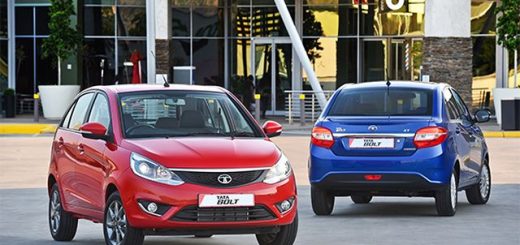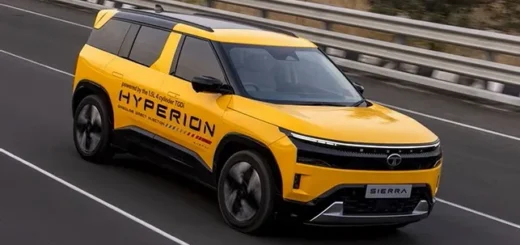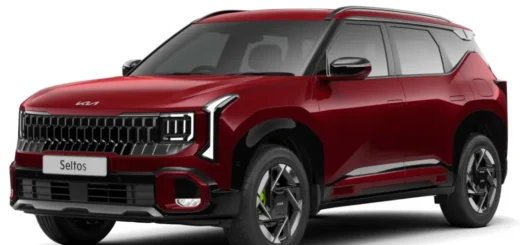Why Fiat Punto Failed Euro NCAP Crash Test?
The deplorable crash performance of the aging car reflects that the driver aid techs and crash safety standards have gone up in recent years.
The crash test of 2017 Fiat Punto by Euro NCAP earlier this month was unprecedented, for both the Italian brand and the testing agency. Fiat is renowned for its solid-built and well-engineered cars, but its popular supermini hatchback has performed strangely bad in the latest crash test results. Embarrassingly, the third-gen Punto has snipped the needless limelight by becoming the first car to score zero rating in Euro NCAP. What’s gone wrong? Is it out of Fiat’s wrongdoing, or the independent crash tests becoming irrelevant and less pragmatic?
Also Read: 2019 Fiat Cronos (X6S) Sedan (Linea Successor)
Let’s delve a little further into the test results first. The crash tested model is a 2017 Fiat Punto 1.2 Easy variant (5-door) that weighs 1,030 kgs and equipped with dual frontal airbags, front seat belt pretensioner and loadlimiter as standard fitment. The result document summarizes the car’s passenger safety performance in four aspects – Adult occupant protection rated at 51 percent, Child occupant protection at 43 percent, Pedestrian protection pegged at 52 percent, and Safety assist (driver aid technologies) at zero percent. The test findings are applicable for all other variants of the Punto, Euro NCAP adds.
In terms of adult occupant protection, the frontal offset test has apparently revealed that Punto’s passenger compartment has remained stable. The knee and femur protection for both the driver and front passenger was good, but dashboard structures seem to present risk of injury. Protection of driver has been rated good for all critical body regions. Passenger’s chest protection was rated marginal, but weak for rear occupant. Front seats and head restraint tests have proved poor whiplash protection during rear-end collision. Lack of head-protection airbag for passengers in Punto meant that the side pole test was not performed.
Absence of i-size compatible seats reflects compromised child occupant safety. The agency has used 10 year and 6 year dummies to assess the protection levels. The head, neck, and chest protection of 10 year dummy was rated either poor or marginal, while the car earned ‘good’ for the other dummy. For pedestrian, the protection offered by the bonnet to his/ her head was predominantly poor or weak, although good in places. The
bumper provided good protection to the legs and pelvis area. The absence of any safety assist features was a huge let down, the Punto earning zero points in this particular category.
Critical Inference
Born in 2005, the Fiat Punto is a twelve-year old model that has seen very marginal design and equipment revision all these years. It was neither replaced with newer model in many global markets, as the brand was busy adopting a new “two-pronged model” approach, especially for Europe. This age factor is perhaps the major cause for the car’s feeble crash safety performance, as the Punto could not match the pace at which the industry standards on safety and willingness on part of manufacturers to offer safety package have gone up. In fact, the Punto has been rated 5-star in adult protection way back in 2005 by Euro NCAP, and 3-stars for both child occupant and pedestrian protection. As Michiel van Ratingen, NCAP’s secretary general, has rightly pointed out, the Punto is a classic example of a product that is sold well past its “best-before date at the expense of the unsuspecting buyer”.
Also Read: Why Mahindra Scorpio Failed Global NCAP Crash Test?
The Punto has still fairly performed in this crash test, but in an “old-school” fashion. The body shell has remained intact, there was hardly any structural deficiency, and the driver protection was earnest. But in the last decade, a lot of importance is given to crash avoidance as a basic tenet of crash safety in the Euro NCAP. This calls for active safety technologies like Blind Spot detection, Speed Alert, Lane Assist, and Autonomous Emergency Braking. The industry’s adoption towards such new standards is also evident. For instance, Fiat Punto’s rival cars in Europe like Ford Fiesta, Volkswagen Polo, and Seat Ibiza are all equipped with such driver assistance features as standard fitment. Fiat does not even offer these techs as optional feature in Punto, and the only standard equipment offered is a seat-belt reminder! This stark tech divide not in sync with the present-day safety norms has penalised the Fiat Punto’s rating to a great extent.
Of course, we already knew that a modern replacement for the Punto hatch is already out – the Fiat Argo. In Europe, FCA is promoting the new Tipo 5-door as a premium alternative, so it is likely that they may pull-off the Punto very soon. But watch out, the devil is in developing markets, especially India, where there is hardly any announcements on the car’s replacement with a modern hatch in near future. On the contrary, Fiat India continues to offer multiple iterations of the car in India, and, that too without standard fitment of dual airbags and ABS with EBD across the range. With the proposed Bharat NCAP coming into effect next year, it is likely that our Fiat Punto Evo may perform poorer in the crash tests that we would expect it to.
Next, would you like to read more on Fiat?









